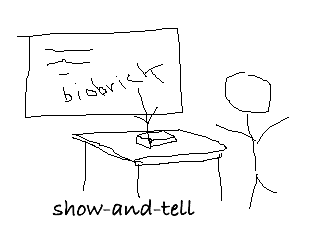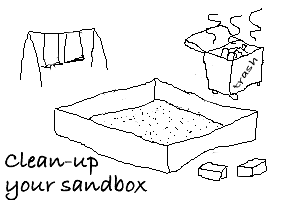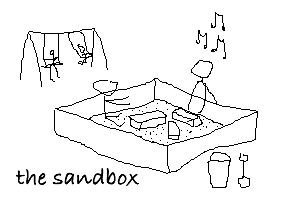Sandbox Devolpment
From 2006.igem.org
Jamesbrown (Talk | contribs) |
Jamesbrown (Talk | contribs) (→) |
||
| (2 intermediate revisions not shown) | |||
| Line 1: | Line 1: | ||
__NOTOC__ | __NOTOC__ | ||
| - | == | + | == == |
{| | {| | ||
|[[image:sand.png]] | |[[image:sand.png]] | ||
|width=600px| | |width=600px| | ||
| - | BioBrick | + | Your BioBrick Sandbox is exclusive to you and your team; it is a designated development area where you can freely add & edit parts, development design concepts and ideas and piece your project together brick-by-brick. Adding a part to your sandbox is quick and easy to do. Once this is done, you can go about making use of the registy's toolbox to refine, consolidate and tune your parts and devices. |
| - | + | ||
| - | + | ||
| - | + | ||
| - | + | ||
| - | + | ||
| - | + | ||
|} | |} | ||
| - | == | + | == == |
{| | {| | ||
|[[image:show.png]] | |[[image:show.png]] | ||
| Line 26: | Line 20: | ||
|} | |} | ||
| - | == | + | == == |
{| | {| | ||
|[[image:clean.png]] | |[[image:clean.png]] | ||
| Line 39: | Line 33: | ||
|} | |} | ||
| - | == | + | == == |
{| | {| | ||
|[[image:release.png]] | |[[image:release.png]] | ||
Latest revision as of 18:55, 14 July 2006

|
BioBrick parts can be assembled to form useful devices, through a process often refeed to as 'Standard Assembly' This uses normal cloning techniques based on restriction enzymes, purification, ligation, and transformation. BioBrick parts are composable; allowing endless numbers of biobricks to be pieced together to form higher systems. The assembly to the left shows 3 BioBricks assembled to create a simple device. You can learn more about this device by following the link to its associated page in the registry. You may like look into:
|

|
BioBrick parts can be assembled to form useful devices, through a process often refeed to as 'Standard Assembly' This uses normal cloning techniques based on restriction enzymes, purification, ligation, and transformation. BioBrick parts are composable; allowing endless numbers of biobricks to be pieced together to form higher systems. The assembly to the left shows 3 BioBricks assembled to create a simple device. You can learn more about this device by following the link to its associated page in the registry. You may like look into:
|

|
BioBrick parts can be assembled to form useful devices, through a process often refeed to as 'Standard Assembly' This uses normal cloning techniques based on restriction enzymes, purification, ligation, and transformation. BioBrick parts are composable; allowing endless numbers of biobricks to be pieced together to form higher systems. The assembly to the left shows 3 BioBricks assembled to create a simple device. You can learn more about this device by following the link to its associated page in the registry. You may like look into:
|
